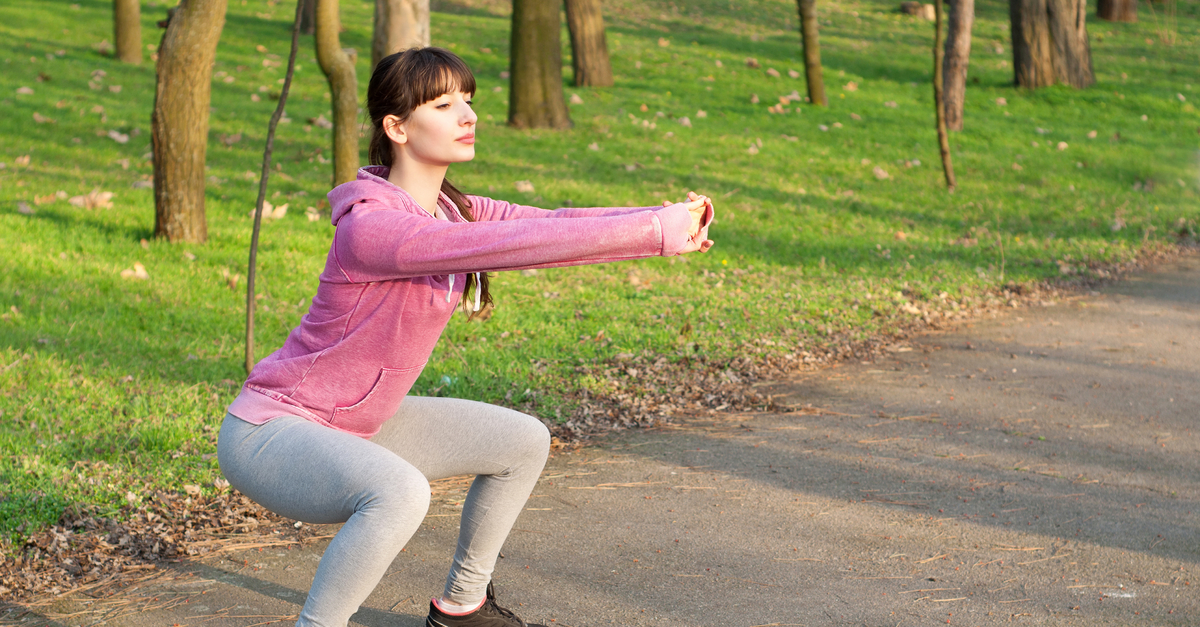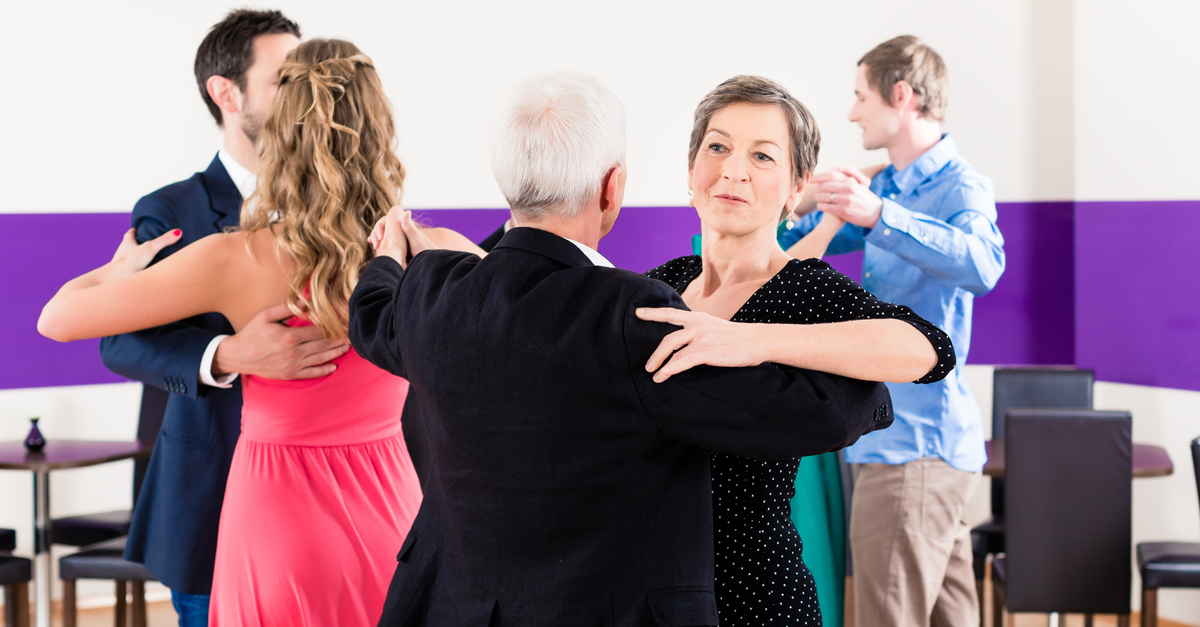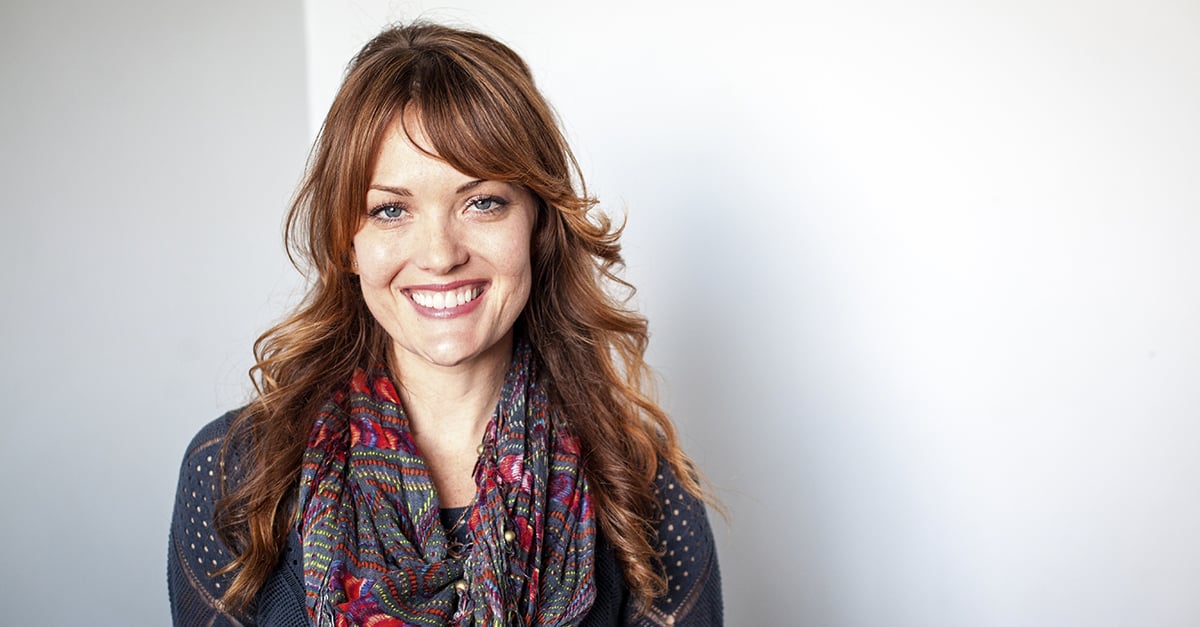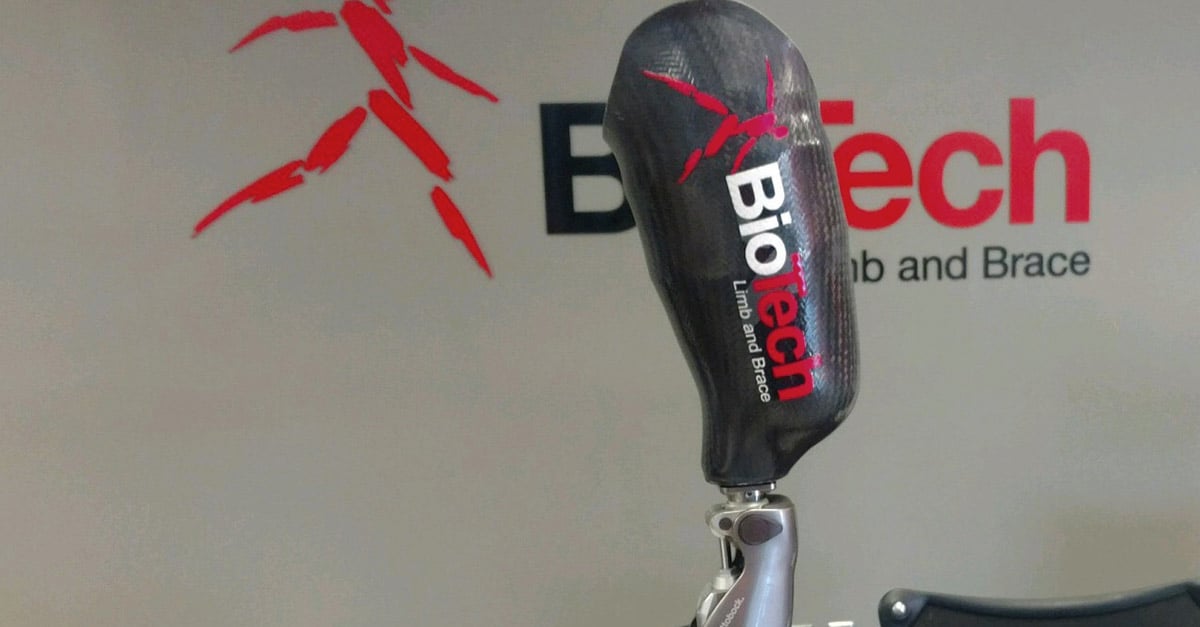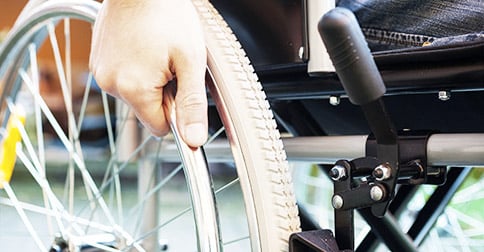Meet Jessica Cox, a natural risk-taker and the first woman to fly an airplane with her feet. Filipino-American Jessica Cox was born without arms due to a rare birth defect, but this hasn’t stopped her from learning to live an extraordinary life.
A Shocking Discovery
Jessica was born on February 2, 1983. Jessica’s parents were shocked and stunned when they found out that their baby was born without arms. Despite having normal pregnancy exams, Jessica was delivered with a birth defect that doctors couldn’t explain.
With the unexpected news Jessica’s mother, Inez, had a tough time accepting reality and became anxious about the future that lay ahead for her daughter.
A Fearless Child
Despite her mother’s anxiety, Jessica was enrolled into a regular public school, rather than a private or special needs school. Her parents had a strong desire to integrate her into a regular environment as much as possible. Jessica embraced this mindset and never saw herself as different from the other children.
However, during recess, some people would act overprotective and try to prevent Jessica from climbing up the slide. This caused Jessica to feel hurt and frustrated, and often she’d find herself swinging and daydreaming of flying.
Disarming Limits
Jessica never let her fears stop her from following her dreams. This was the exact reason why one day, after 11 years, she decided to stop wearing her prosthetic arms. Though she knew children might make fun of her, she felt a connection to her feet and promised herself she would never wear a prosthesis again.
Little did she know that these feet would carry her through college and across a stage to become a professional motivational speaker.
From the obstacles she has overcome, Jessica became an inspiration to many, and a natural source of encouragement.
Still, Jessica dreamed of one day taking to the skies and piloting her own plane. After three years of arduous training, Jessica became a certified pilot and the first woman to fly a plane with her feet.
The Sky's the Limit
Jessica Cox’s story is just further proof that no matter your limitations, you can accomplish anything you dream. She continues to travel the world motivating and inspiring people around her with her speeches, and challenging others to achieve their impossible dreams.
Always remember that before you can achieve anything, you must first believe that it’s possible.
The future is extremely bright at BioTech Limb and Brace. Contact us today and discover endless possibilities.
One of the best ways to deal with limb loss is to start moving and stay active. By getting active and exercising your body, you’ll not only make your body stronger, but you’ll also make your mind stronger.
Plus, regular exercise boosts your spirits and helps create a positive outlook, which is always great.
Staying active doesn’t mean you have to take up a sport or do something extreme. You can get a good workout and build up strength and balance in your body just by doing some simple exercises on a regular basis.
Here are exercises we’ve identified that help you develop strength throughout your body and cultivate more balance, which will both help you get around the way you want.
Exercises for Strength
It’s important to build strength not just in the limb with your prosthetic device, but also in your support limbs and your core. A stronger body leads to better mobility. You’ll feel better, too.
Seated Push Up
One of the best things you can do to develop core strength and also build up strength in your lower and upper body at the same time is to do a seated push up.
Place a chair against a wall, then sit in the chair. Put your hands on the armrests or on the sides of the seat. Then, push down on the chair so that your hips and bottom are off the seat by two inches. Rest between repetitions.
If you want to add more difficulty to the exercise, you can simply by elevating a leg. If you do, alternate legs.
Squats
Squats are one of the best all-around full-body exercises you can do to build strength. There are two variants: a partial squat and a wall squat.
A partial squat is accomplished by holding onto something sturdy and spreading your weight across both legs. Then, while keeping your back straight, squat down like you’re sitting on a stool. Don’t go completely down to where your knees are at a 90-degree angle, but stop short so that it doesn’t become too uncomfortable.
If you want to go into a full squat, stand with your back on a wall and slide down until your knees are bent. You don’t have to go all the way to a 90-degree bend, but go as far as is comfortable. Hold this position for up to 30 seconds, or as long as you can, then rise back up and repeat.
Exercises for Balance
Strength is important, but so is balance. It can be difficult for new limb loss patients to regain their sense of balance without a lot of practice and hard work. Fortunately, you can do a few exercises to help you develop more balance and coordination.
Balanced Weight Bearing
This is not as much an exercise of the body as it is an exercise of both body and mind. Throughout your day, when you’re standing or walking, actively think about how you’re bearing your weight.
Most patients we see start out by putting most of their weight on their support limb. Try to evenly distribute your weight as you go throughout the day. If you’re walking, put equal weight on both limbs. If you’re lifting something with an arm prosthesis, try to bear as much of the weight on both arms as possible.
Think about it, visualize the weight, and then try to balance it out as much as possible.
Hands and Knees
This exercise will help you maintain balance no matter what limb is affected.
Get down on your hands and knees. Raise one arm in front of you, then put it down. Do the same for one of your legs. Once you’ve done this for each arm and each leg, try to raise your left arm and your right leg at the same time. Switch and do it again for the opposite side. Then, once you master this, try to hold the pose for a few seconds while continuing to breathe before relaxing.
During these exercises, keep your back straight and your eyes down toward the ground.
Balance Beam
You don’t have to use an actual beam for this; you can instead make your surface uneven by placing a pillow on the ground. No matter what you use, whether it’s an actual beam or a pillow, place it on a non-slick surface and then stand on it with one leg and stand on level ground with the other.
Place your hands on a support surface and gently sway back and forth, then to the left and right. Focus on keeping your muscles tight so you can support yourself.
Staying Active and Practicing Motion
The best way to develop strength and balance following limb loss is to give you and your prosthetic device lots of practice.
In addition to these exercises, try walking regularly. Think about doing calisthenics. Talk to your physical therapist and ask for suggestions as to what you can do at home.
Stay moving, and you’ll find you can do anything you want! In the meantime, contact BioTech for advice that will help you stay healthy and happy.
Dancing with a prosthesis may not sound like the biggest obstacle after learning to walk and run, but it does bring a new set of challenges! More than this, though, it can bring a new level of joy into our lives. While all forms of upward mobility are important for our physical well-being, there’s something about shaking our hips to the beat of a song that can’t be replaced. Whether it’s for a wedding, a school event, hanging out with friends, exercising, or any other reason - learning to dance is great for both the mind and body. Keep reading for more information on why it’s so important and what to expect when hitting the dance floor.
Benefits of Dance
Dancing has numerous benefits for the human body. This includes improvements to muscular strength, aerobic fitness, weight loss, bone strength, and increasing the health of our heart and lungs.
Besides the physical benefits, there are many social benefits. It would be hard to argue that getting out, being active, and enjoying the night with friends is bad for you. All of this is even more true for those who’ve experienced limb loss.
Having the willpower to continue improving one’s body with a prosthesis can become an incredibly difficult task at times, but having a fun activity to focus on can make the experience much easier. Dancing also helps with certain movements that are important for everyday living!
Improving Your Moves
Dancing involves a lot of movement in a lot of directions, which is great for gait training. One of the most difficult aspects of most prosthetic devices is walking backwards. It’s certainly no walk in the park, but dancing classes provide a fun way of learning these reverse moves. In the case of dancing lessons, one step forward really is taking two steps back!
Just like other activities on a prosthesis, there will be multiple obstacles during the learning process, like soreness and control. However, having a great support group, a positive instructor, and a good attitude provide a path to perseverance.
Ask BioTech for More Information
We have decades of experience helping those with limb loss accomplish anything and everything that they desire. Don’t believe that we can help people improve their dancing skills? We actually helped Noah Galloway with his Dancing with the Stars appearance, along with preparing to rock climb and other activities! Contact us today to learn how we can turn your disabilities into possibilities.
Amy Purdy has inspired millions of people across the world with her seemingly endless resume of accomplishments. For most people, making it through a 2% chance of surviving would be impressive enough, but Amy continues to push past any perceived limits of success. Her story is truly an inspiration, not only to those who have experienced limb loss, but for anyone looking to better themselves and achieve the impossible.
Experiencing Limb Loss
Amy was already a motivated individual at the age of 19, but certain events were about to make or break her attitude towards self-productivity. This is when she contracted Meningococcal Meningitis, which began as flu-like symptoms -- and then put her in septic shock within 24 hours. She later lost both of her legs, both kidneys, and her spleen. She would begin moving toward the use of prosthetic devices as soon as possible, and received a kidney from her father two years after she lost hers.
Staying Motivated
It didn’t take much to motivate Amy. Less than a year after receiving her prostheses, she was hitting the slopes! Not only was she snowboarding, she was winning awards while doing so. After placing third in a competition, the Challenged Athletes Foundation offered her a grant that would allow her to competitively snowboard across the United States.
Continued Success
Amy moved to San Diego in 2003. While she continued to work with the Challenged Athletes Foundation, she also explored many other interesting professions. Some of the amazing things Amy has done since then include:
- Actress - This includes everything from Madonna music videos to Super Bowl commercials and winning awards for lead roles in independent films. She also appeared on The Amazing Race and had a historic run on Dancing with the Stars!
- Author - Her 2014 book, On My Own Two Feet: From Losing My Legs to Learning the Dance of Life, was a New York Times Best Seller.
- Modeling - Amy starred in multiple projects, including a very impressive performance with Nikki Sixx.
- Motivational Speaker - Considering all of Amy’s other accomplishments, this one only made sense. Some of the most memorable have been a tour with Oprah Winfrey and a very quotable presentation at a TEDx Talk event in Orange Coast, California.
- Paralympic Athlete - Amy was a prominent figure in the 2014 games, and won the bronze medal in Snowboard Cross.
To sum it up, there is nothing Amy Purdy can’t do! She is a one-stop resource for all things motivational, and we look forward to witnessing her continued moments of greatness.
We Turn Disabilities into Possibilities
BioTech has been in the prosthetic and orthotic industry for over 15 years, and our combination of experience and innovation allows us to help our clients in unique ways. Individuals like Amy Purdy not only affirm what we do, but they motivate us to continue pushing forward. Contact us if you are interested in learning more about our process.
The idea of a personalized prosthesis may sound crazy. Many people view their prosthesis as a simple tool, a method of moving around. However, prosthetic devices create an ability to express who we are that would not normally be available. With an idea and an experienced prosthetist, the limb can become a work of art! But how does it happen?
Why It Matters
The process of getting a prosthetic device can be difficult. On top of that, having people bring it up all the time for whatever reason rarely brings encouragement. Many of our clients have told us that having a custom leg design creates a new sense of individuality and empowerment. We believe that having the power to showcase your personality is a wonderful addition in any aspect of life!
How It Works
When a client decides they want to customize their prosthesis, there are a number of options. The most affordable option would be prosthetic sleeve covers. These allow users to take whatever picture or design they want, and turn them into a sleeve that will wrap securely around the prosthetic. If that isn’t permanent enough for you, talk to your prosthetist about placing custom designs on your next prosthesis! For example, we have created many custom designs out of our carbon fiber prosthetics at the request of our amazing patients, including zebra stripes, camouflage, and of courses, sports teams!
Ideas
There is no limit to what you can have on your prosthesis! It is a part of you, so choose something that describes you the best. Being in the Southeast, we have many people who want to represent their favorite football team. A favorite design, symbol, or even a character from a movie can work. Don’t be afraid to get creative! We recently shared an article on our Facebook page about a girl that traveled the world with a chalkboard-like prosthesis, and wrote the name of each country she visited on her leg. Nothing is impossible, just let the dreams fly!
BioTech Can Help Find the Perfect Prosthesis
We have been working on custom prosthetic devices since 2000, and will always put a focus on what makes our clients the most comfortable. Our number one priority is our patient's well-being and happiness, and we will do whatever it takes to give you the best experience. Contact us for more information.
Are you familiar with the name Aron Ralston? Even if you don’t think you know him, you know his story. His journey into the canyons of southeast Utah in 2003 ended with an unfortunate accident, resulting in his self-inflicted arm amputation to escape a fallen boulder. His story was described in his autobiography Between a Rock and a Hard Place, which was later converted to film through the movie 127 Hours. But what exactly happened in that canyon, and what is Aron up to now?
The Experience
One fateful April day in 2003, Aron Ralston decided he was going to venture around Horseshoe Canyon in a remote area of Utah. While it sounds like a pleasant weekend, it involved dangerous climbs, and he didn’t tell anyone where he was going. He spent the next five and a half days trying to figure out any way to get out from under the boulder and find help. After almost a week of unsuccessfully finding someone to lend him a hand, he realized he would have to lose his. We will skip the details, but the act was even more intense than it sounds. Even more impressive is that Aron tied his own tourniquet and proceeded to repel 60 feet to find help. The experience touched many people around the world and showed millions how far the human will to survive could go.
Life After
Aron had his autobiography published in 2004, which detailed much of his life with a specific focus on the harrowing tale at Horseshoe Canyon. He proceeded to appear in many entertainment platforms including The Simpsons, Tosh.0, and endless late night shows. The most famous of these ventures was, of course, the movie 127 Hours, starring James Franco. The film was nominated for 6 Oscars and propelled Aron and his story to the front of many conversations. Outside of the entertainment industry, he continues to climb and motivate others. Specialized gear like an ice axe, a specialized gripper, and a prosthesis that holds climbing gear provide more than enough support to take on the mountains. He also uses his newfound celebrity status to support charities and raise awareness for various causes.
BioTech Helps Transform Lives
Our passion is helping motivated individuals like Aron Ralston turn their dedication into tangible progress. We have years of experience in the industry and understand that growth is a constant battle, but one that is worth the fight. Contact us for more information on how we can transform your disabilities into possibilities -- together.
Wheelchairs are a wonderful invention that help countless people move faster and more easily than they normally could. While certain situations require the use of a wheelchair and simply don’t allow the option for a prosthesis, there are other times that the option is available -- it just hasn’t happened yet. Whether it is due to finance, pain, worry, or other factors, it is not unusual for those who have experienced limb loss to be hesitant about acquiring a prosthesis. Keep reading to learn more about the considerations of this transition.
Preparation
There will be a lot of tests, both physical and mental, before you can move out of your wheelchair, and preparation goes a very long way in assisting with these challenges. There are many different ways to help yourself:
- Plan Ahead - Recognize what you are going through now, consider the upcoming obstacles, and have a game plan ready! While it sounds simple, it is very important for pushing forward in tough times.
- Take Care of Yourself - This should always be a priority, but take extra care of the limb that will wear the prosthesis. Starting off comfortably will go a long way.
- Exercise - Research the specific muscles that will face the most strain, and work towards making them stronger. Understand that various parts of your body will feel new pressures, not just your affected limb.
- Talk to Your Prosthetist - They will have the experience and knowledge to help guide you towards the path of least resistance.
Practice
When you first start wearing your prosthesis, it may be difficult and frustrating. If you push through, keep learning, talk to your prosthetist, and keep a positive attitude, you will see that the experience becomes easier the more you do it. While practicing by yourself, make sure to walk on different surface types and perform various daily duties with your prosthesis on. Stay calm if you experience a setback (like falling) and keep moving forward -- persistence will pay off!
Participate
This is important before and after the transition to a prosthesis. Having a community that you can talk to will make the process tremendously easier. Knowing that you are not alone in a situation is always comforting, and this is no exception. Walk with friends, check out sports teams, go to the movies, or whatever it is that gets you out and about. You also want to spend time and have good communication with your prosthetist. They will have perspective and updates that can only be achieved with years in the business, along with solutions to any problems you may face.
Let BioTech Help
Two of the biggest parts of walking on a prosthesis successfully are comfort and experience. BioTech provides the highest quality of both. Our personalized BioTech Comfort Socket System allows us to adapt each prosthesis to their individual owner, allowing for maximum comfort. Our team also has decades of experience with not only designing, but teaching, encouraging, and providing support in whatever way is needed. Learn more and contact us for more information.
Climbing Mt. Everest and reaching the summit is a task that only a select few can say they have accomplished. A miniscule amount of climbers can even make the journey to the base camp, and even the ones fortunate enough to get the opportunity don’t always make it to the top. It is a dangerous mission that is only meant for those who are both mentally and physically strong.
Tom Whittaker is one of those people.
Tom Whittaker lost his right foot after a car accident in 1979. He had already been physically active (he was a rock climber, rugby player, and had already summited Mount McKinley) before the wreck and decided to keep this mentality after. Along with regular workouts, he found which muscles to train that would offset the loss of his right leg and began to acquire a new form of balance. Training to hike any mountain is never easy, but climbing Mt. Everest with a prosthesis had literally never been done before. It would take new levels of determination and strength to reach the top.
Tom had two trips that were cut short before his historical ascent to glory in 1998. The first was in 1989 when he had almost reached 25,000 feet. A storm arrived and killed a total of six people. He would not get another attempt at the summit until 1995, when he almost reached the top. With only 1,500 feet remaining, Tom felt that he was moving too slowly on the rocks to make it to camp by nightfall and had to turn away from his decades-long goal. A friend and member of his crew brought him back a rock from the summit during that trip and told Whittaker to return it to the top for him.
Tom finally reached the summit of Mt. Everest on May 27th, 1998, and carved his name in history in that moment. His wife, Cindy, was there every step of the way, leading the crew into the Everest base camp and managing the monumental Everest Challenge ‘98. Tom Whittaker is not only a pioneer in prosthetic achievements, he should be an example of the truth that anything can be done, no matter what those around you say. It will not always be easy; in fact it will usually be difficult, but whatever challenge we are facing with a prosthesis or otherwise, we know we will be able to move past it.
BioTech Is Here to Help
We exist not only to provide you with the prosthesis and other equipment needed to feel comfortable daily, but to excel at whatever it is you want to accomplish. Our team has years of experience and enjoys seeing the people we work with continue to succeed. Contact us today to learn more about how we can help you move your mountain.
Memorial Day is almost here, and with it comes the remembrance and honoring of every soldier that has died in battle. While we are remembering those that are gone, we can still take steps toward helping our nation’s living veterans. Here are a few ways we can honor the deceased while thinking of the living.
Fly Flags at Half-Mast
The United States flag is typically flown at half-mast until noon on Memorial Day. This is done to give honor and thanks to our fallen heroes. If you have a flagpole, take time to research the proper way to carry and raise the flag, and inform those around you if they would like to become involved. Even if you don’t have a flagpole, take some time when you pass a flag to remember everything others have sacrificed and given up for us to be here.
Donate to Charity
Donating to a charity for veterans can help the quality of life for veterans who gave up so much of themselves for our freedom. Memorial Day is focused on those who gave their life, but it is also a great reminder of what has been given up by veterans and their families. Many members of our military have endured physical limb loss, not to mention the mental and emotional toll of battle. Look into the thousands of charities available and find one that you would like to donate to.
Visit a Museum
Museums are a great way of understanding the brutal conditions that soldiers face in war. If you have children that seem to take these days lightly, showing them just how much was given up for their freedom may help them gain an appreciation for our fallen heros.
Thank Living Veterans and Soldiers
It is easy to be viewed as a hero once you have passed, but many of our living veterans do not get the support, help, and thanks that they deserve. Besides donating to a charity or volunteering to help disabled veterans, saying thank you to a veteran or active soldier can go a long way. Care packages can show that you do indeed care, and something as small as a conversation can help show that we do appreciate everything that they have done for us.
BioTech Thanks All Those Who Have Fought
BioTech has worked with many veterans and is thankful for every citizen that puts on a uniform to defend our country. This Memorial Day, we want to remember all the veterans lost in battle, and we vow to continue helping those who have lost a limb in war. Learn more about what we do and contact us today to discuss finding the right prosthesis for you.
Armed Forces Day is Saturday, May 20. The annual event is part of Armed Forces Week, which starts on the second Saturday of May every year. The intention of the week is to pay our respect to all of the men and women who have served for the United States Armed Forces. All branches are recognized and honored on this day. It is the perfect time to focus on and appreciate everything that veterans have sacrificed for our freedom - including, sometimes, their limbs.
The harsh reality of war is readily faced by our brave soldiers, and unfortunately, some of our best citizens are put in rough situations. Thousands of veterans lost a limb in combat or as a result of an amputation after being in Iraq and Afghanistan alone.
Solutions
Fortunately, we are in a time where we can make life as comfortable as possible for those who have suffered limb loss, including our veterans. New technology is constantly being invented which not only makes everyday life easier, but also advances a wide range of interests including athletics and exercise. Prosthetic devices are being made more customizable and comfortable, and continue to improve.
Besides the physical conflicts, many veterans are faced with mental conflicts like PTSD after coming back from battle. There are many treatment centers, group therapies, and psychologists that can assist in moving past this. If you or someone you know seems to be feeling symptoms, it is important to seek help as soon as possible. Keep these organizations that aim to help veterans with limb loss in mind.
Saying Thank You
Armed Forces Day reminds us to thank our veterans, but we should carry that reminder with us throughout the year. Both through words and actions, there are many ways to says thanks. There are programs for anything you can imagine. Writing thank-you notes to veterans or current soldiers, donating money to help veterans receive a prosthesis, visiting a VA, and countless other appreciative actions are possible through selfless people starting organizations. If you personally know a veteran, take the time to say thank you throughout the year.
We Thank You
BioTech has had the fortune to work with many different heroes, and we are thankful for everyone who has fought for our country. If you are in need of a prosthesis and interested in finding the best path for you, contact us today.

